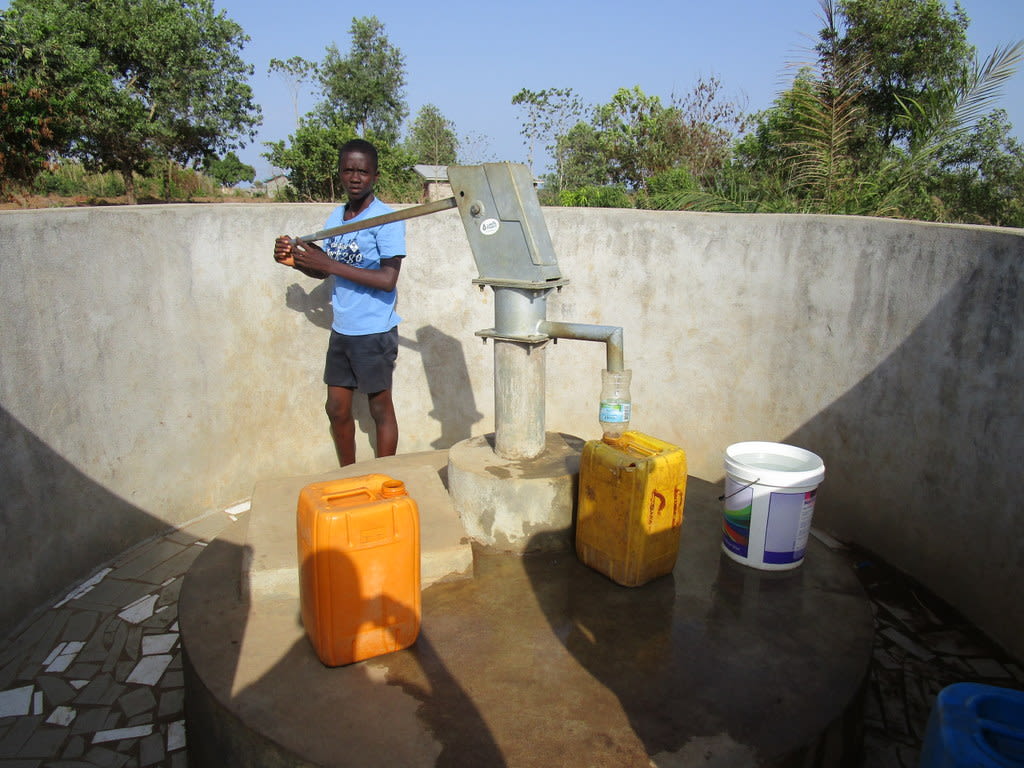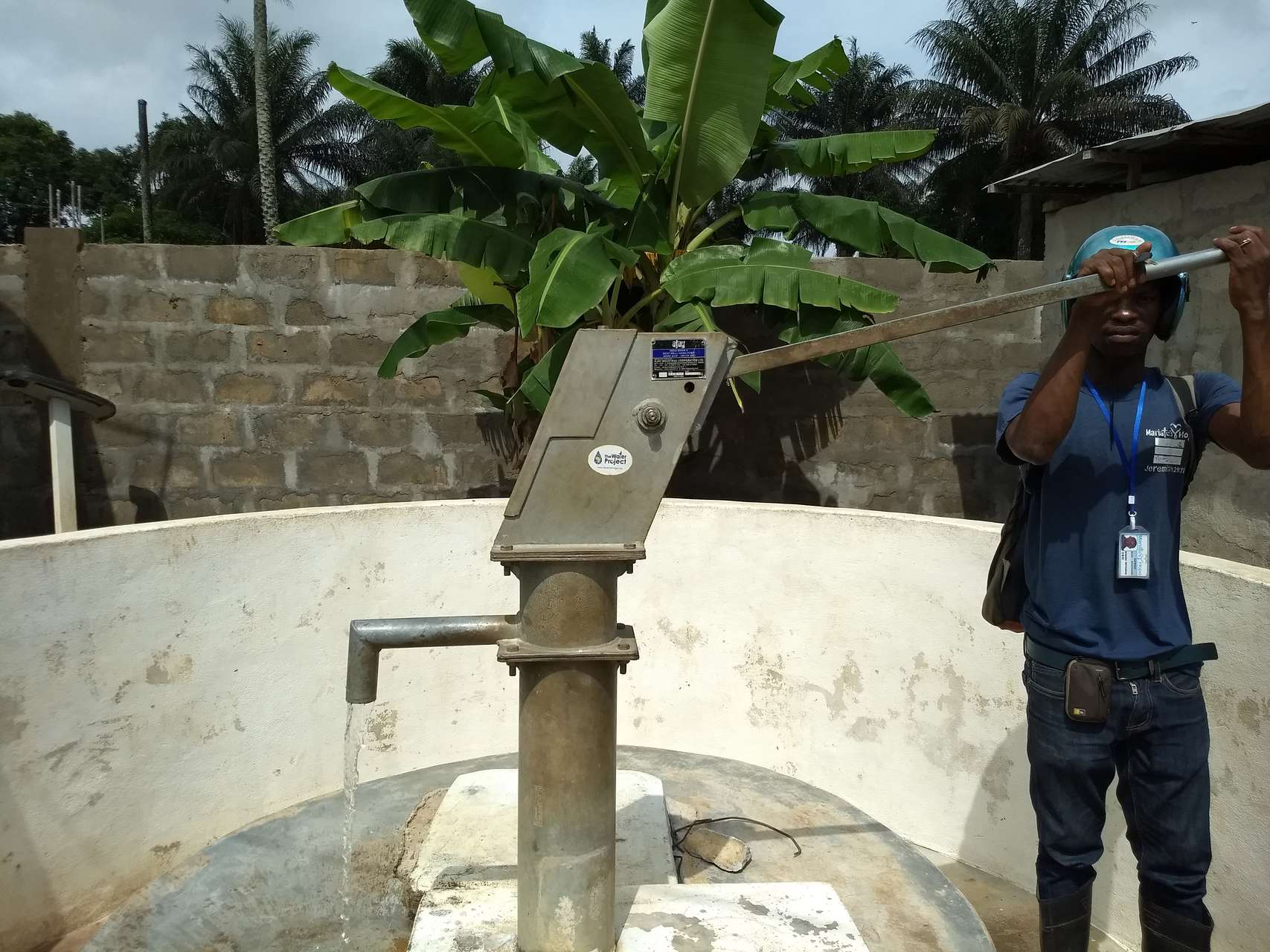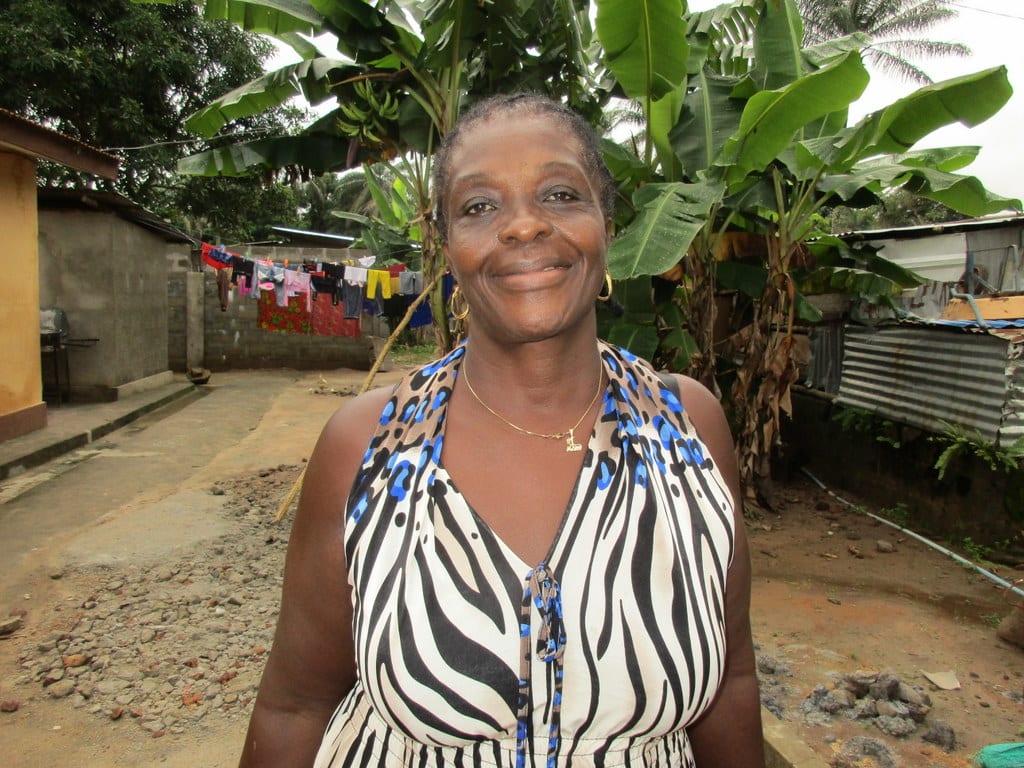Rosint Community was founded by the Susu Tribe under the leadership of Pa. Alimamy Kamara. He is crowned as local chief and a district officer of Port Loko.
The founders of this community were Muslims who were later joined by Christians. Even though many people here have different faiths and denominations, they still live as one family. Intermarriage between tribes and religions is entirely normal in Rosint.
Rosint is from the Themne language, meaning "sand." The Susu and Themne came in this community for fishing, while the Limba later came for tapping palm wine. Daily activity begins as early as 5 am for the Muslims, 6 am for the Christians. It starts with bathing in preparation for morning prayer and services. When people return home from the mosques and churches, they prepare their children for school. Rice left from the other day is warmed up for breakfast, and then the children have to clean the compound and wash the dishes. The children will take their showers to get to school by 8 am.
While children are at school, adults either go to the beach to fish or to the swamp to farm. Farmers grow different kind of crops and vegetables. Everyone returns home around 5 pm for dinner. Students do their homework before the sun sets, and everyone goes to evening prayers around 8 pm.
The livelihoods in this community are fishing, gardening, production of oysters, teaching and petty trade. Rosint is the greatest producer of oysters in Sierra Leone, making it stand out as a community.
Water
Sierra Leone has faced some particularly dry times these past few years. Rain hasn't fallen as expected, and this has taken a huge toll on wells excavated several years ago. Many of these projects wrapped up when they hit water, without any anticipation of extreme, environment-changing weather.
We've stood by these communities as they use, manage, and maintain their water points. Quarterly visits have revealed a drastic decrease in water levels, and many hand-dug wells have gone dry, including this one in Rosint Community.
Since our installation of a new AfriDev pump years ago, the community has taken the initiative of adding their own submersible pump that supplies water to a reservoir. This alteration has compromised the integrity of the well pad, allowing contamination to wash underground. It doesn't even appear that the submersible pump is working properly, with the majority of community members still manually pumping water from the AfriDev.
When the pump can't pull up any water, community members are forced to return to surface water. The main source is the swamp where they farm. Containers are dunked directly in the milky-colored water and carried back home for cooking, cleaning, and drinking. After consuming this swamp water, community members complain of diarrhea. Children are late for or entirely miss school, and families spend resources and time treating preventable illnesses.
The community leaders always call us during this difficult time to make sure we know the well is not meeting their water needs. They cannot afford what it takes to put reliable water back in their well, so we have decided to come alongside them to restore clean water to Rosint.
Sanitation
100% of households in this area of Rosint have pit latrines. However, they're not always preferred. Many are not clean or maintained, so potential users will instead seek the privacy of bushes and trees to relieve themselves.
There are no hand-washing stations here, and few helpful tools like dish racks and clotheslines. Animals are not penned and roam freely around the community.
70-year-old Isatu Gilbert is a nurse who can testify to the poor health of her neighbors "The health situation is very poor. People in the community are often sick with malaria, typhoid and dysentery."
Here's what we're going to do about it:
Training
There will be hygiene and sanitation training sessions offered for three days in a row.
No hand-washing stations were observed here. After our visit, the hygiene and sanitation trainer decided it would be best to teach community members how to build a tippy tap (a hand-washing station built with a jerrycan, string, and sticks). They will use these tippy taps for hand-washing demonstrations, and will also teach about other tools like dish racks and the importance of properly penning in animals.
A Reliable Water Well
In the past, wells were rehabilitated using large cement caissons lowered down inside of the well. A well technician goes down and digs the dirt out around the caisson until it slowly sinks down and the water comes in. This is not the best method because we constantly have to return to these wells to dig them deeper after they fill up with sand again (because this is a coastal area). By drilling down inside of the well using a manual technique, we will be able to go down much deeper. We are hoping we can drill down an additional 30 or more feet to make this a water source that lasts through all seasons.
The pump will be removed, and a man will be lowered inside with a hand auger. This hand auger will allow the team to drill several meters deeper to hit a sufficient water column that will ensure the well supplies water throughout the drier seasons. As the team drills, casing will be installed, transforming this hand-dug well into a pseudo-borehole. PVC piping will connect this lower system directly to the pump, a construction that we know will also improve the quality of water.
Once this plan is implemented, everyone within the community will have access to safe drinking water in both quality and quantity, even through the dry months.
This project is a part of our shared program with Mariatu’s Hope. Our team is pleased to provide the reports for this project (formatted and edited for readability) thanks to the hard work of our friends in Sierra Leone.

 Protected Dug Well
Protected Dug Well
































